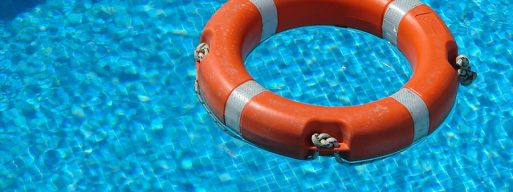A Guide to Swimming Pool Safety Practices
Swimming is a fun pastime, especially in the hot summer months. It’s a great way to cool off, socialize with friends and family, and get a good workout.
Of course, it’s important to stay safe around the pool.
For those who don’t know how to swim, or who don’t have good safety habits in place, a swimming pool is a potential hazard.
Many people who learned how to swim as children take their swimming skills for granted. What comes as second nature for many isn’t the case for all. And for poolside events, all it takes is a slip or trip to fall in.
We’ve put together a few helpful tips and best practices to keep your pool and the people using it safe as you enjoy a soak this summer.
Why Are Swimming
Lessons So Important?
Swimming lessons are important to learn how to swim, be comfortable, and be safe in water. With lessons and practice, swimmers can enjoy swimming safely and effectively.
They learn swimming techniques to use swimming as an exercise and recreational pastime, and to help them be better prepared and not panic in water.
Swimming lessons are offered at local recreation centres, like the YMCA and community centres. Simply search online for swimming lessons near you, and visit your city’s website.
If you are enrolling yourself or your child in swimming lessons, make sure to buy the following swimming gear:
- A one-piece swimsuit for women and girls, and a bathing suit that isn’t loose and won’t drag in the water—unlike bulky board shorts—for boys and men.
- Swimming goggles.
- A silicon swim cap for those with long hair—or for everyone, depending on the pool’s regulations.
Being comfortable in the water is a life skill that can also improve your quality of life.
Maintain A Clean Pool and Check for Damage or Signs of Repair
To ensure pool safety, install a safety fence around your pool. You might want to consider installing a swimming pool safety cover as well. They can help prevent children and animals from getting in your pool unsupervised.
A few other things to consider:
- Always clear the pool and pool deck of toys when you’re finished using them. This will stop kids from wanting to go back to the pool to play with their toys unsupervised.
- Check that you have compliant drain covers.
- Install pool and gate alarms for added safety.
- Clean your pool and test the water chemicals regularly.
- Ensure that your pool equipment is well maintained and working properly. And consider hiring a pool service professional to inspect your pool for any damage, maintenance, and safety concerns.
Know the Signs of Drowning
Drowning is the number one safety concern for swimming, but it might surprise you to learn that it is usually silent and unexpected. Lifeguards at public pools keep a keen eye out for the signs of drowning for good reason.
Often, victims don’t look like they’re drowning. That’s why it’s important to recognize the signs of drowning so you can help save someone’s life.
The signs of drowning include:
- Head low in the water and the mouth at water level;
- Head tilted back and the mouth open;
- Hyperventilating or gasping;
- Hair over forehead or eyes;
- Eyes closed;
- Eyes glassy, empty, and unable to focus;
- Not using legs;
- Trying to swim in one direction without making progress;
- Trying to roll over onto the back; and
- Appearing to climb an invisible ladder.
What to Do in Case of An Emergency
If you notice someone drowning in water, don’t wait to help. It can take only 20 to 60 seconds for a person to go under water and drown. Make sure to ask for help from someone nearby and to have them call 911.
Take the person out of the water and check for signs of breathing. If they’re not breathing, check for a pulse for 10 seconds. If there is no pulse, start CPR if you have CPR training.
Swimming Pool Safety Basics
- Take swimming lessons if you don’t already know how to swim.
- Learn CPR and life-saving skills.
- Always swim with another person around.
- Be alert and know what drowning signs to look for.
- Don’t swim near or under slides and diving boards.
- Avoid drinking alcohol before swimming.
- Never drink alcohol if you are supervising children in the pool.
- Stay out of the pool when you are very tired, very cold, or overheated.
- Don’t eat or chew gum while swimming.
- Stay out of the pool if you see lighting or hear thunder.
- Don’t run or horseplay around the pool.
- Don’t swim at night unless you have a well-lit pool.
- Only go down pool slides feet first.
- Never try dangerous stunts around the pool.
Why Swimming Is Good for You
Swimming has many physical and mental health benefits. It is a low-impact exercise that is gentle on joints, good for the whole body, and promotes core strength and cardiovascular health.
Swimming relaxes the mind and boosts moods. What’s more, swimming is a fun social activity to enjoy with friends and family.
Knowing how to swim allows you to safely practice other water sports, such as canoeing, kayaking, surfing, and boat fishing, opening a whole world of adventure and fun on the water.
Swimming is an important life skill to have. It allows you to enjoy water comfortably and safely. It’s never too late to learn how to swim, and you can never be too safe when it comes to making sure your pool is safe for everyone.
Keep these pool safety tips in mind so you can enjoy your pool and swim safely this summer.


